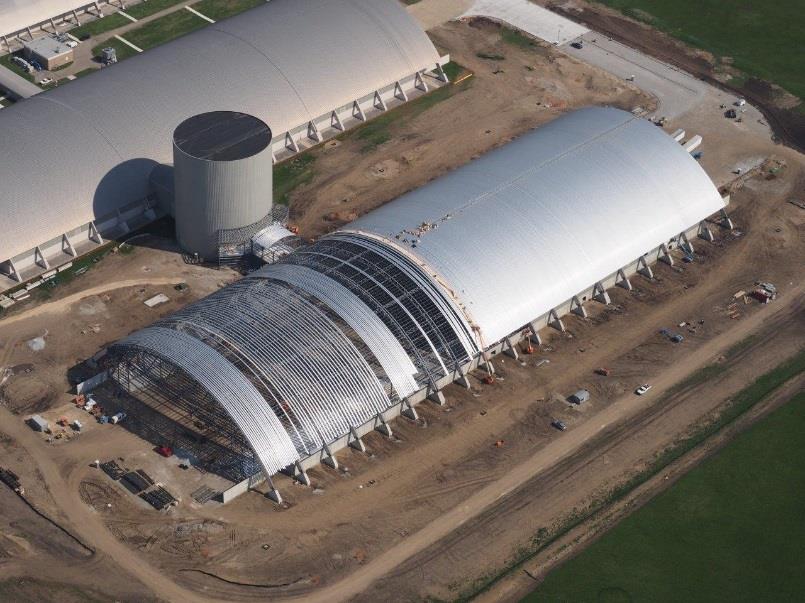This project was special and challenging due to the design of a dual temperature HVAC water system, the size and height of the building, and the vast amount of equipment and systems to install with a very aggressive schedule. MSD was responsible for all of the Mechanical work including HVAC systems, controls, radon systems, plumbing systems, and insulation for both plumbing and HVAC on this Project.
MSD faced many challenges from the start of the project. We were not able to start our underground plumbing work until the structural steel contractor finished setting the arches which required (3) cranes working in unison, to lift the arches in place. Because of this, we were forced to start our underground in December. In order to help facilitate the schedule, we worked hard to complete the underground as quickly as possible all while fighting the frozen ground. We also, began installing our overhead duct and pipe before the roof was on. This left us contending with the rain, snow and winter winds.
During the spring and summer, our field crews utilized a phone app that would warn them of any nearby lightning headed their way and were able to work around every storm that came, descending down off the lifts safely and out of harm’s way. Safety was in fact THE number one priority on this project; Turner employed a full-time safety supervisor on site and with the excellent coordination and communication between Turner, the Corps of Engineers, our safety director, our foremen, and our mechanics we were able start and
complete this project without a single incident even while being delayed approximately (30) days due to weather. With the size of this project and the amount of manpower used to build Museum Hangar 4 it is quite extraordinary and very self-rewarding.
This project was one of the most challenging projects MSD has completed. In fact, it would have been impossible if it wasn’t for the leadership of two excellent foremen: Kevin Oney and Jeff Storck as well as their field crews. We can attribute the project’s success to the employees and their attention to detail, as well as excellent craftsmanship. Almost every project has its challenges and obstacles, but this one was by far unique. Now when we walk up to Building Hangar 4 and look through those huge doors to view
what we accomplished, we only ask one question: “When is Hangar 5 going to start?”
You can read more on NMUSAF by clicking here.



